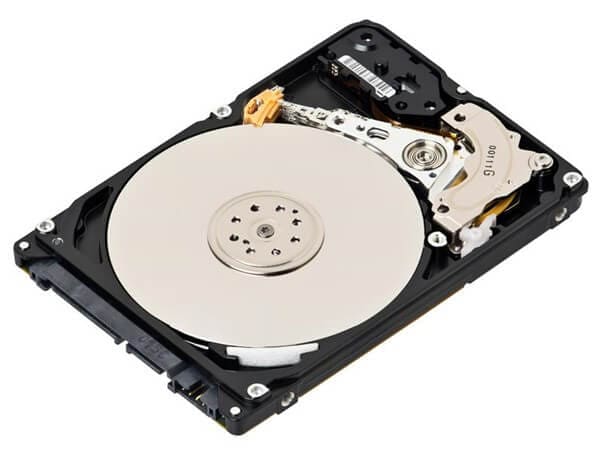
Magnetic Disks are something people have used throughout the computer ages. Large floppy disks held whole applications in the early days of storage technology. These gradually progressed to compact floppies that could store higher amounts of data. Computers use hard drives to store all software files and anything else that a company or individual wants to save. Magnetic approaches entail encoding data into the drive using magnetism. Then, it can be saved or deleted at any time. Secondary storage in computers is often made up of stacked magnetic discs stacked on top of one another.
In this article
What Is A Magnetic Disk?
A Magnetic Disk is a type of secondary memory that consists of a flat disc with a magnetic coating that stores data. It's where you keep all of your apps and files. One represents polarised information in one direction and vice versa. The direction is denoted by the number 0.
Magnetic discs are less expensive than RAM and can store vast amounts of data; however, secondary memory slows data access compared to main memory. In the magnetic disc memory, data can be easily edited or removed. It also provides for data access at any time.
IBM produced the first magnetic hard drive in 1956, a big system with 50 21-inch (53-cm) discs. Unfortunately, it could only store 5 megabytes of data despite its size. Since then, magnetic discs have expanded their storage capacity by orders of magnitude while shrinking.
How Does A Magnetic Disk Work?
When I click save, how does it work?
- The spindle rotates the platter.
- The actuator arm makes a cross-over motion across the plate.
- The actuator arm sends your saved data to the read/write head.
- The head alters the polarity of a sector (a section of the platter - see below) on the platter to one or more north poles or south poles.
- North pole, South pole, North, North, South, and so on are analogous to binary ones and zeros (as per the diagram on the left).
The magnetic disk's functioning
The disk's surface is divided into tracks, which are concentric circles. The outermost track has a number of 0, and the last track has a number of 1. Tracks are subdivided further into sectors. A sector is a slice of the pie that cuts through all of the tracks. Sectors are used to store data on the disc. A sector is the smallest unit that may be read or written on a disc. Each track on a disc has eight or more sectors.
For access, a magnetic disc is put into a magnetic disc drive. The drive is made up of a read/write head connected to a disc arm that moves the head. On the disc, the disc arm can move inside and outward.
The motor of a disc drive moves the disc at a rapid speed (60–150 times/sec.) when reading or writing to it.
Pros And Cons of Magnetic Disk
The magnetic disc is the most common direct-access secondary device, as we all know. The magnetic discs are also the device's most popular online secondary storage, available in various sizes. In addition, they might be portable or fixed in their storage devices or disc drives.
There are various advantages and disadvantages of magnetic disk memory.
Pros
This is a low-cost memory.
Data can be accessed quickly and directly.
It has the ability to store vast volumes of data.
It can transport data faster than magnetic tapes.
When opposed to tapes, it is less vulnerable to data corruption.
The magnetic disc can be used for both online and offline data storage.
Magnetic disc systems often have a faster data transfer rate than tape systems.
Cons
They cost less than RAM but more than magnetic tape memories.
It must be stored in a clean, dust-free environment.
Sequential access is not possible with these.
When a disc drive or disc fails, all of its data is lost.
Information security is challenging to maintain.
Not appropriate for devices that require sequential access rather than direct or random access.
Magnetic Tape And Magnetic Disk
Magnetic Tape - The Data is stored on magnetic tape, which has a thin plastic ribbon. It's an SRAM (sequential randomly access memory). As a result, data read and write speeds are slower. It's primarily used to back up data.

Magnetic Disk - The magnetic disk is a circular metal or plastic disc. Data is frequently stored on both sides of the disc. Magnetic oxide is used to coat the disk. The disk is divided into many concentric circles called tracks, which are further divided into sectors where data is stored.
Difference between Magnetic Tape And Magnetic Disk
Magnetic Tape |
Magnetic Disk |
| 1) Magnetic tape is less expensive | 1) Magnetic discs are expensive |
| 2) Magnetic tape has a longer access time | 2) Magnetic discs have a faster access time |
| 3) Magnetic tape has a lower level of reliability | 3) Magnetic discs have a higher level of reliability |
| 4) Magnetic tape has a lower data transfer rate than other medium | 4) Magnetic discs have a higher data transfer rate |
| 5) Backups are made on magnetic tape | 5) A secondary storage device is a magnetic disc |
| 6) Magnetic tape is much more portable than other tapes | 6) The data access rate on a magnetic disc is high or rapid |
| 7) Magnetic material is only coated on one side of magnetic tape for data recording | 7) Magnetic material is coated on both sides of the platters in magnetic discs for data recording |
| 8) The data is lost if the tape is damaged | 8) The data is lost in the event of a blow to the head |
Optical Disk And Magnetic Disk
- An optical disk is a detachable, transportable storage medium.
- When compared to a magnetic disk, Optical Disk produces a higher signal-to-noise ratio.
- The optical drive is like to save games, music, films, gifs, and other files.
- An optical disc is an optional component in computers.
- Optical storage devices are flat and spherical discs with a spinning center.
- Laser light is utilized to read and write data in discs in Optical Storage devices.
- The operation of optical storage devices necessitates using extra drives.
- A single detachable disk is employed as the media drive.
Magnetic Disk
- Data is stored on a magnetized media in magnetic storage devices. To store data, magnetic storage systems utilize various magnetization patterns in a magnetized media.
- Files, data instructions, and information are all stored on magnetic drives.
- A multiple fixed disc is employed as the media type.
- Magnetic fields can potentially harm data stored in magnetic storage devices.
- Magnetic disc tracks are usually circular.
- Magnetic discs are an essential component of computers.
- Hard discs, floppy discs, magnetic tapes, and other magnetic devices are examples of magnetic devices.
Conclusion
While many types of disk drives are available in the market, they all have pros and cons. The important thing is their reliability, characteristics, and importance should match your personal needs. Magnetic Disk drives are a good option if you are searching for a lot of space. One of the plus points is that magnetics disks are less expensive than RAM. However, proper handling is required. Dropping it, exposure to severe heat, or strong magnetic fields can cause harm. On the other hand, a magnetic disk is extremely dependable if not destroyed.

 ChatGPT
ChatGPT
 Perplexity
Perplexity
 Google AI Mode
Google AI Mode
 Grok
Grok























